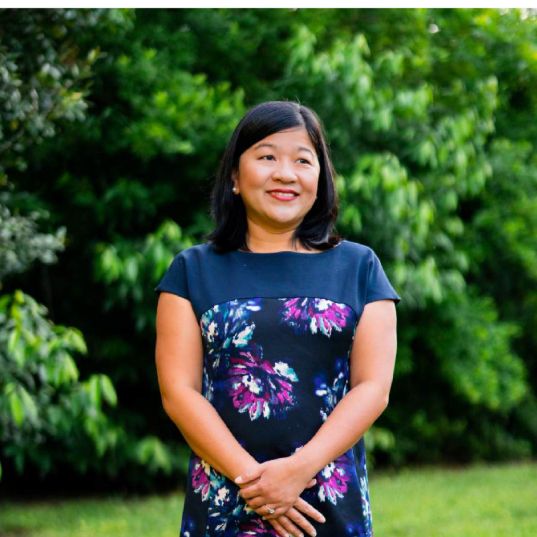A Step-by-Step Guide to Bipolar Disorder Therapy in New York City
Starting bipolar disorder therapy in New York City often begins with recognizing mood swings, sleep changes, or disruptions to work and relationships, and deciding it’s time to seek help. Next, research licensed providers who specialize in bipolar disorder, comparing credentials, insurance accepted, and neighborhood—MiResource’s directory makes this easy by filtering for borough, specialty, cultural fit, and availability. Once you’ve identified a few options, schedule an initial consultation to discuss symptoms, goals, and logistics like in-person vs. virtual care. At the first session, you’ll review your history, clarify a diagnosis if needed, and collaborate on goals while discussing medication coordination with a psychiatrist if appropriate. From there, you’ll follow a structured treatment plan—often CBT, DBT, IPSRT, or psychoeducation—with regular sessions and progress check-ins.
In NYC, many therapists offer flexible formats: in-person sessions in offices from Midtown and the Upper East Side to Downtown Brooklyn and Long Island City, or HIPAA-compliant telehealth if you’re in Queens, the Bronx, or Staten Island. For in-person visits, plan transit: the 4/5/6 and Q lines for the Upper East Side, L to Williamsburg, N/W to Astoria, or use Citi Bike; if driving, look for garages near FiDi and Midtown or metered parking in Park Slope and Forest Hills. MiResource can help you find clinicians near major hubs like Penn Station, Grand Central, Barclays Center, or Jackson Heights–Roosevelt Avenue to simplify commutes. After your first appointment, confirm follow-up cadence, discuss crisis plans, and set reminders to stay consistent. Revisit goals periodically with your therapist and adjust the plan as life in the city—and your needs—evolve.
Guide to Accessing Local Organizations for Bipolar Disorder Support in New York City
Local organizations in New York City offer practical, community-based support that can complement clinical care for Bipolar disorder by providing peer groups, education, and navigation help. Peer-led programs from groups like
NAMI-NYC
and
DBSA
NYC can reduce isolation and share real-world coping strategies. Community hubs such as
Fountain House
foster social connection, employment support, and wellness activities for people living with serious mental illness, including Bipolar disorder. City-backed resources like
NYC
988 can help you find local services and multilingual supports.
Vibrant Emotional Health
, which administers key helpline services, also offers education and connection to care. Engaging these networks can help you build a reliable support system across neighborhoods in New York City.
- Identify: Use
NYC
988’s resource directory to search for bipolar-specific support, and explore
NAMI-NYC
,
DBSA
NYC,
Fountain House
, and
Vibrant Emotional Health
.
- Verify fit: Review each organization’s programs, schedules, eligibility, and language options; look for bipolar-focused groups, education classes, or clubhouse membership.
- Contact: Call or email to confirm meeting times and access details; for quick navigation help, dial 988 and request local referrals in New York City.
- Engage: Attend an introductory group or orientation, ask about peer mentoring or family education, and set a recurring schedule to build continuity.
- Follow up: Request additional resources (workshops, benefits counseling, or referral to clinicians) and evaluate what best supports your Bipolar disorder goals.
Guide to Using Emergency Services for Bipolar Disorder in New York City
Use emergency services if symptoms of Bipolar disorder escalate to immediate danger, such as suicidal thoughts or plans, intent to harm others, severe mania or psychosis (e.g., hallucinations, delusions), or inability to care for basic needs. Seek urgent help if there is rapidly worsening mood, risky behavior, or substance use that increases danger. When in doubt, err on the side of safety and get help right away—fast response can prevent harm and stabilize a crisis.
Step 1: Identify a crisis
- Warning signs include suicidal thoughts, threats or plans; extreme agitation, paranoia, or hallucinations; reckless or aggressive behavior; or being unable to safely care for yourself. If weapons, intoxication, or medical symptoms are present, treat as an emergency.
Step 2: Call or text for immediate help
- Call or text 988 (988 Suicide & Crisis Lifeline) or chat at
https://988lifeline.org
for 24/7 support and connection to New York City resources.
- If there is imminent danger, call 911 and state there is a mental health emergency involving Bipolar disorder; request officers trained in Crisis Intervention Team (CIT) if available.
Step 3: Request local mobile crisis support or guidance
- Contact
NYC
988 for local referrals and to request a Mobile Crisis Team when safe to wait:
- Mobile Crisis Teams can come to your location, assess safety, and coordinate care, including transport to a hospital if needed.
Step 4: Go to an emergency room with psychiatric services
- You can go to the nearest emergency department; New York City options include
NYC Health + Hospitals
facilities with psychiatric emergency (CPEP) services: locations at and behavioral health info at
NYC Health + Hospitals
- Additional hospital systems with psychiatric emergency services:
NewYork-Presbyterian
,
Mount Sina
i, and
NYU Langone
.
- Bring medications or a list, ID, and insurance if available; expect safety screening, a psychiatric evaluation, and stabilization, with referral or admission if needed.
Guide to Using Parks and Green Spaces in New York City to Support Mental Health
Spending time in nature can lift mood, reduce stress, and support better sleep and focus. For people managing Bipolar disorder, regular outdoor routines may help steady daily rhythms, offer calming sensory experiences, and create space for mindful movement and reflection. Even brief visits to green spaces can foster a sense of connection and balance. Choose settings that feel comfortable and return often to build a supportive habit.
- Find your nearby green space: Explore Central Park (The Ramble, Conservatory Water), Prospect Park (Long Meadow), The High Line, Hudson River Park, Brooklyn Bridge Park, Van Cortlandt Park, Pelham Bay Park, Flushing Meadows Corona Park, the Staten Island Greenbelt, and Jamaica Bay Wildlife Refuge. Use the NYC Parks map or transit apps to pick places that fit your time and energy.
- Prepare a simple plan: Check weather, daylight, and crowd levels; choose calm times like early morning. Wear comfortable shoes, bring water, a light snack, and layers; save a map offline and set a time limit that feels manageable.
- Make the most of your visit: Start with a gentle 10–20 minute walk, mindful breathing, or journaling on a bench by the water at Hudson River Park or along Prospect Park Lake. Try a loop trail in Van Cortlandt Park or a scenic stroll on The High Line; notice sounds, colors, and your pace.
- Build consistency and community: Schedule regular outings (e.g., twice weekly), invite a friend, or join free NYC Parks events like ranger-led walks or volunteer gardening in Brooklyn Bridge Park. Rotate locations—Central Park on weekdays, Jamaica Bay Wildlife Refuge on weekends—to keep it fresh and supportive.
Your Guide to Understanding Bipolar Disorder
Bipolar disorder
is a mental health condition that causes intense shifts in mood, energy, and activity levels. People may experience “highs” called mania or hypomania (feeling very energized, talkative, impulsive) and “lows” of depression (feeling very sad, tired, or hopeless). These mood changes can happen in cycles, last days to weeks, and vary from person to person. Bipolar disorder is more than everyday ups and downs and can affect work, school, and relationships. The good news is that it’s common, understood, and treatable.
Understanding Bipolar disorder helps you recognize signs early, reduce stigma, and know that these experiences are not your fault. With the right support—like therapy, medication, regular sleep, stress management, and social support—many people find stability and lead fulfilling lives. Learning your triggers and tracking mood can make episodes easier to manage or prevent. Reaching out to a mental health professional can provide a clear plan and ongoing guidance. You are not alone, and help is available.
What Bipolar Disorder Is and How It’s Defined
Bipolar disorder is a mental health condition that causes intense shifts in mood, energy, and activity levels, moving between “high” periods and “low” periods. The American Psychiatric Association and the DSM-5 describe these highs as mania or hypomania—times of unusually high energy, less need for sleep, and impulsive choices—and the lows as
depression
, with deep sadness, fatigue, or loss of interest. Organizations like the National Institute of Mental Health and the World Health Organization recognize Bipolar disorder as a treatable condition that varies in severity and pattern. With the right support and care, many people manage symptoms and lead fulfilling lives.
Who Bipolar Disorder Can Affect
Bipolar disorder can affect people of all ages, genders, and backgrounds, from students juggling classes to parents managing busy households, professionals at work, and retirees enjoying new routines. While it’s often first noticed in late teens or early adulthood and may be more common in those with a family history or after major life changes (including postpartum), anyone can experience Bipolar disorder. Symptoms can show up in everyday moments—like sudden energy surges, sleep changes, or mood shifts that feel hard to explain. No matter who you are, seeking support is a strong, normal step toward feeling better.
Why It’s Important to Learn About Bipolar Disorder
This section outlines common signs of Bipolar disorder to help you notice patterns early and feel more prepared to seek support. Everyone’s experience is different, and noticing a few of these signs doesn’t mean a diagnosis—but it can be a helpful prompt to talk with a healthcare professional.
- Mood swings that last days to weeks, shifting from very “up” to very “down”
- Times of unusually high energy with little need for sleep, followed by low-energy periods
- Irritability or feeling “on edge” that others notice is out of character
- Racing thoughts, talking faster than usual, or jumping quickly between ideas
- Impulsive choices (spending sprees, risky driving, sudden plans) that you later regret
- Low mood, loss of interest in usual activities, or changes in sleep and appetite
- Feeling unusually confident or powerful, then later doubting yourself or feeling guilty
What People Want to Know about Bipolar Disorder
- How do I know if I’m ready to start therapy for Bipolar Disorder?
You might be ready to start therapy for Bipolar disorder if you’ve noticed its impact on your mood,
relationships
, work, or daily routines and want more stability. Feeling motivated to understand your patterns, learn coping skills, and try new strategies is a strong sign you’re prepared. If you’re open to support, curious about treatment options, or tired of managing Bipolar disorder alone, therapy can help. Taking this step is a positive, hopeful move toward feeling more in control. - What should I look for when choosing a therapist who treats Bipolar Disorder in New York City?
Look for a therapist with strong experience treating Bipolar disorder, including mood-stabilization strategies and relapse prevention, in New York City. Ask about their therapeutic approach (
CBT
,
DBT
, interpersonal/social rhythm therapy) and how they tailor care to your goals. Verify credentials, licensing in New York, and coordination with prescribers when medication is part of treatment. Choose someone who feels respectful, collaborative, and like a good fit—your comfort and trust matter for effective Bipolar disorder care in New York City.
- What are evidence-based therapies to treat this Bipolar Disorder?
Effective, evidence-based treatments for Bipolar disorder include medication management (like mood stabilizers) to steady mood and prevent relapse. Cognitive Behavioral Therapy helps people change unhelpful thoughts and habits, build coping skills, and stay on track with care. Interpersonal and Social Rhythm Therapy focuses on steady daily routines and sleep, and improving relationships to reduce mood episodes. Family-Focused Therapy teaches families clear communication and problem-solving so they can support recovery and spot early warning signs of Bipolar disorder. - How long does therapy for Bipolar Disorder usually take?
Therapy for Bipolar disorder varies by severity, treatment type (e.g., CBT, psychoeducation, family-focused therapy), personal goals, and individual progress. Many people see meaningful changes over several weeks to a few months, while ongoing maintenance therapy is common to support mood stability—timelines aren’t guaranteed. Consistency and commitment between sessions are key for Bipolar disorder outcomes. In New York City, options include weekly outpatient therapy, psychiatry and medication management, and intensive programs or teletherapy to match your needs.
- Can I combine therapy for Bipolar Disorder with medication?
Many people with Bipolar disorder find the best results from a combination of therapy and medication, which can reduce symptoms and support long-term stability. It’s important to make treatment decisions with a qualified mental health professional who can tailor care to your needs and monitor progress. In New York City, coordination between therapists and medication prescribers (such as psychiatrists or psychiatric NPs) helps ensure consistent, collaborative care. If you’re exploring options in New York City, ask providers how they communicate and coordinate your Bipolar disorder treatment plan.
- How much does Bipolar Disorder therapy typically cost, and will insurance cover it?
Therapy for Bipolar disorder can vary widely based on location,
provider type
(
psychiatrist
, psychologist, therapist), session length, and whether you’re doing individual, group, or telehealth care; in New York City, higher clinic overhead often means higher fees. Many plans cover in-network therapy and medication management, but costs depend on deductibles, copays/coinsurance, session limits, and prior authorization. Ask your insurer to confirm in-network providers, behavioral health benefits, telehealth coverage, and any referral requirements, and request a Good Faith Estimate from providers. If cost is a barrier, look for sliding-scale options, training clinics, NYC Health + Hospitals outpatient programs, nonprofit community mental health centers, and city resources like NYC Well to find lower-cost care for Bipolar disorder. - What can I do between therapy sessions to help manage my Bipolar Disorder?
Between therapy sessions, track your mood, sleep, and triggers daily to spot patterns and share them with your therapist—consistency is key for Bipolar disorder. Keep a steady
sleep
schedule, take medications as prescribed, limit
alcohol
and cannabis, and build a calming routine with movement, nourishing meals, and brief mindfulness. Create a written coping plan and crisis checklist, including trusted contacts and New York City resources you can use if symptoms spike. Stay connected through peer support or community groups in New York City, and schedule small, doable activities that match your current energy level to maintain momentum.













